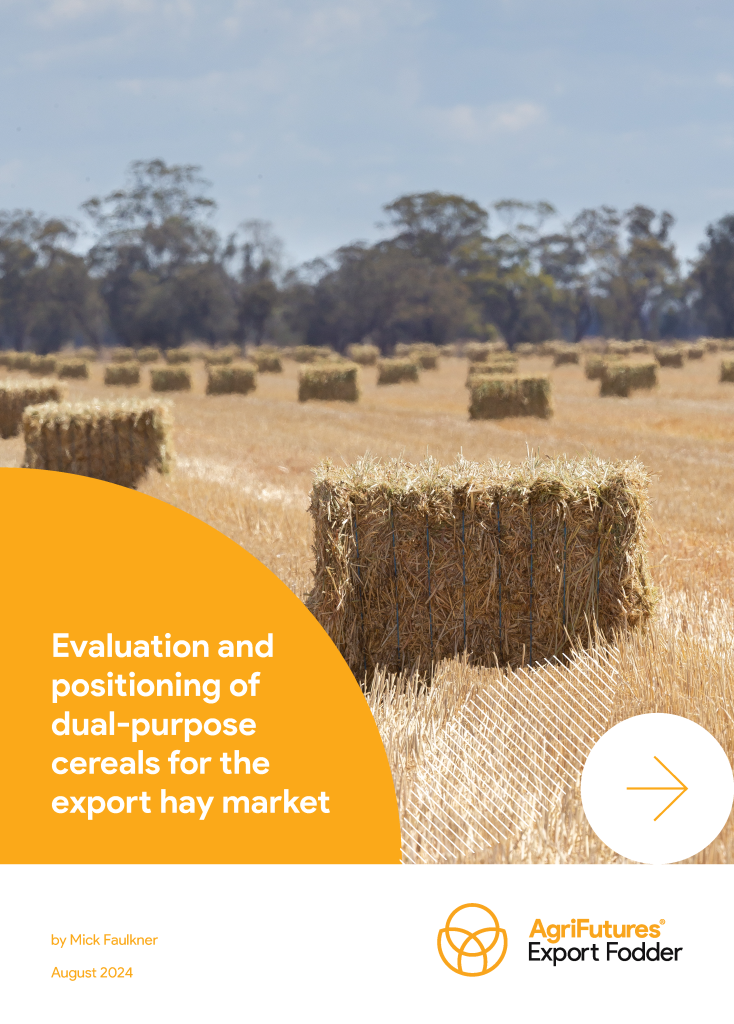The Australian export fodder industry is a significant contributor to the Australian economy, with about $450–600 million worth of hay exported annually, predominately to Asia and the Middle East. Most of this export hay is oaten hay, sourced from Western Australia, South Australia and Victoria.
The export hay industry, currently dependent on oaten hay supply, would benefit from the identification of alternative cereal crop options. Identifying suitable wheat and barley varieties would help de-risk the industry’s reliance on oaten hay and provide an opportunity to export these other hay types in seasons when they become financially competitive.
This project, funded by the AgriFutures Export Fodder Program, evaluated the most suitable wheat and barley varieties that have potential for hay and grain production. A range of awnless, hooded wheat and barley varieties were assessed to determine whether they could match or exceed dual purpose benchmarks for biomass yield, hay quality and grain yield. Trials were conducted in the Mid-North of South Australia in 2022 and 2023.
The findings highlighted the potential of wheat and barley for use in the export fodder industry. It also revealed more variety development work is required to produce more genuine dual-purpose options that meet the required hay and grain standards. The hooded barley variety Kraken produced acceptable hay biomass and quality; however, the grain yield was too low to be considered a dual-purpose variety. The awnless wheat variety Orion produced suitable biomass, hay quality and grain yield but, unfortunately, is rated only Australian Soft Wheat (ASW) for grain quality.
Among the highest performers for dual purpose potential were the experimental wheat variety BB256 and the oat variety Bannister, which is already classed as dual purpose.
This project highlighted the potential of some cereal varieties to be grown as genuine dual-purpose hay or grain options. The adoption of dual-purpose varieties is important because it will provide growers with improved end-use flexibility and less production risk. It is recommended that breeding activities increase efforts to develop dual-purpose awnless wheat, awnless/hooded barley and oat varieties that provide adequate hay and grain attributes.





